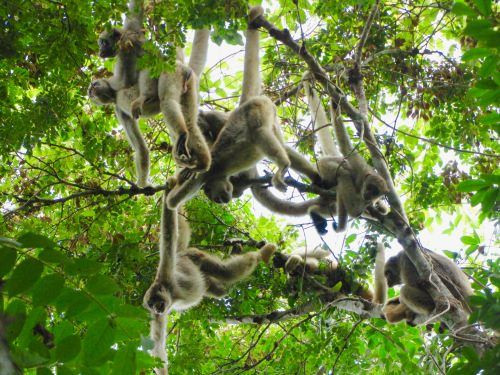Howler Monkeys Dead In Brazil After Yellow Fever Outbreak

Yellow fever has brought the sound of silence to a forest in Brazil full of brown howler monkeys, but the deadly disease might be a good thing for another endangered species, according to a group of scientists.
Thousands of howler monkeys living in a nature preserve in that South American nation have died since late last year, the University of Wisconsin-Madison explained. While the outbreak is alarming and officials are trying to determine how it occurred, the situation opens a door for experts to learn a lot about the animals living in the Atlantic Forest preserve. The American institution has an anthropologist working with Brazilian scientists to calculate how many howler monkeys remain and understand how the ones left “regroup and restructure their societies, since their existing social groups have been destroyed.”
But even without having exact figures, they could hear the difference during a visit in January — the Madison professor, Karen Strier, said in the university statement, “It was just silence, a sense of emptiness. … It was like the energy was sucked out of the universe.”
But where there is death, there is also life: In addition to studying the howler monkeys, the scientists will get to look at woolly spider monkeys, an endangered species that are also known as muriqui monkeys. The two monkeys are competitors, and the deaths of the howlers has potentially left muriquis with a lot of breathing room to thrive.
“No one really knows the consequences for the other primates or the forest when nearly the entire population of an abundant species dies from disease in just a few months,” Strier said. “We are in a position to learn things we never knew before, with all the background information that we have collected.”
Read: Can Chimps Live as Long as Humans?
Howler monkeys are bearded primates found in Central and South America known for their “roaring cries” and for their shouting matches, which they use to mark their group’s territory, Encyclopaedia Britannica says. “Their voices carry for [2 to 3 miles] and can be heard at dusk, at dawn, and during rainstorms.”
The muriquis, on the other hand, is South America’s biggest monkey but also one of its rarest.
Strier called the circumstances brought on by yellow fever in the forest a “controlled natural experiment” of sorts.
“My happy hypothesis is that the muriquis are out foraging, feasting on all the best fruits and leaves that the howlers used to eat,” the anthropologist said.
Yellow fever is carried by mosquitoes and can cause symptoms such as a fever, headache, pain, nausea and fatigue, according to the World Health Organization. Humans can protect themselves with a vaccine against the disease.
See also:
© Copyright IBTimes 2024. All rights reserved.





















